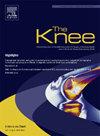AutoCOR:用于全膝关节置换术后x线片的自主髁偏移比计算器。
IF 1.6
4区 医学
Q3 ORTHOPEDICS
引用次数: 0
摘要
背景:本研究旨在自动化测量后髁偏移比(PCOR)和前髁偏移比(ACOR)的过程,以提高全膝关节置换术(TKA)的评估。由骨科医生手动精确计算PCOR和ACOR对于评估术后活动范围和植入物定位至关重要。然而,手动测量是耗时的,容易出现人为错误,并且受到可变性的影响。自动化这一过程可以提高临床实践的准确性。方法:利用OpenCV库中的内置函数,采用k-means聚类,开发了用于图像分割的自动计算PCOR和ACOR的软件系统AutoCOR。该软件在真正的术后侧位x线片上检测关键解剖标志。PCOR和ACOR的定义分别为PCO(后髁偏移)除以股骨直径,ACOR的定义分别为ACO(前髁偏移)除以股骨直径。我们在伊斯坦布尔Kosuyolu Medipol医院的32名患者的50张术后侧位x线片上测试了该算法,其中包括来自。评估过程包括计算平均值,标准差和绘制Bland-Altman图,将AutoCOR的结果与基础真值进行比较。结果:AutoCOR的平均PCOR为0.984 (SD 0.235),基础真值为0.972 (SD 0.164),显示出很强的相关性(Pearson r = 0.845, p)。结论:AutoCOR提供了准确的测量结果,并显示出减少TKA评估变异性的潜力,提高了临床实践中的准确性。本文章由计算机程序翻译,如有差异,请以英文原文为准。
AutoCOR: Autonomous condylar offset ratio calculator for post-operative total knee arthroplasty radiographs
Background
This study aims to automate the measurement process of posterior condylar offset ratio (PCOR) and anterior condylar offset ratio (ACOR) to improve the Total Knee Arthroplasty (TKA) evaluation. Accurate calculation of PCOR and ACOR, performed manually by orthopedic surgeons, is crucial for assessing postoperative range of motion and implant positioning. Manual measurements, however, are time-consuming, prone to human error, and subject to variability. Automating this process could improve precision in clinical practice.
Methods
We developed AutoCOR, a software system that autonomously calculates PCOR and ACOR by utilizing built-in function, employing k-means clustering, from the OpenCV library for image segmentation. The software detects key anatomical landmarks on true postoperative lateral radiographs. The definitions of PCOR and ACOR are PCO (posterior condylar offset) divided by femoral diameter, and ACOR is defined as ACO (anterior condylar offset) divided by femoral diameter, respectively. We tested the algorithm on 50 postoperative lateral radiographs of 32 patients from the Istanbul Kosuyolu Medipol Hospital, which included data from. The assessment process included calculating the mean, standard deviation and plotting the Bland-Altman plots, comparing AutoCOR’s results against ground truth values.
Results
The mean PCOR was 0.984 (SD 0.235) for AutoCOR and 0.972 (SD 0.164) for ground truth values, showing a strong correlation (Pearson r = 0.845, p < 0.0001). The mean ACOR was 0.107 (SD 0.092) for AutoCOR and 0.107 (SD 0.070) for ground truth values, with moderate correlation (Spearman’s rs = 0.519, p = 0.0001).
Conclusion
AutoCOR provides accurate measurements and shows potential to reduce variability in TKA evaluation, improving precision in clinical practice.
求助全文
通过发布文献求助,成功后即可免费获取论文全文。
去求助
来源期刊

Knee
医学-外科
CiteScore
3.80
自引率
5.30%
发文量
171
审稿时长
6 months
期刊介绍:
The Knee is an international journal publishing studies on the clinical treatment and fundamental biomechanical characteristics of this joint. The aim of the journal is to provide a vehicle relevant to surgeons, biomedical engineers, imaging specialists, materials scientists, rehabilitation personnel and all those with an interest in the knee.
The topics covered include, but are not limited to:
• Anatomy, physiology, morphology and biochemistry;
• Biomechanical studies;
• Advances in the development of prosthetic, orthotic and augmentation devices;
• Imaging and diagnostic techniques;
• Pathology;
• Trauma;
• Surgery;
• Rehabilitation.
 求助内容:
求助内容: 应助结果提醒方式:
应助结果提醒方式:


